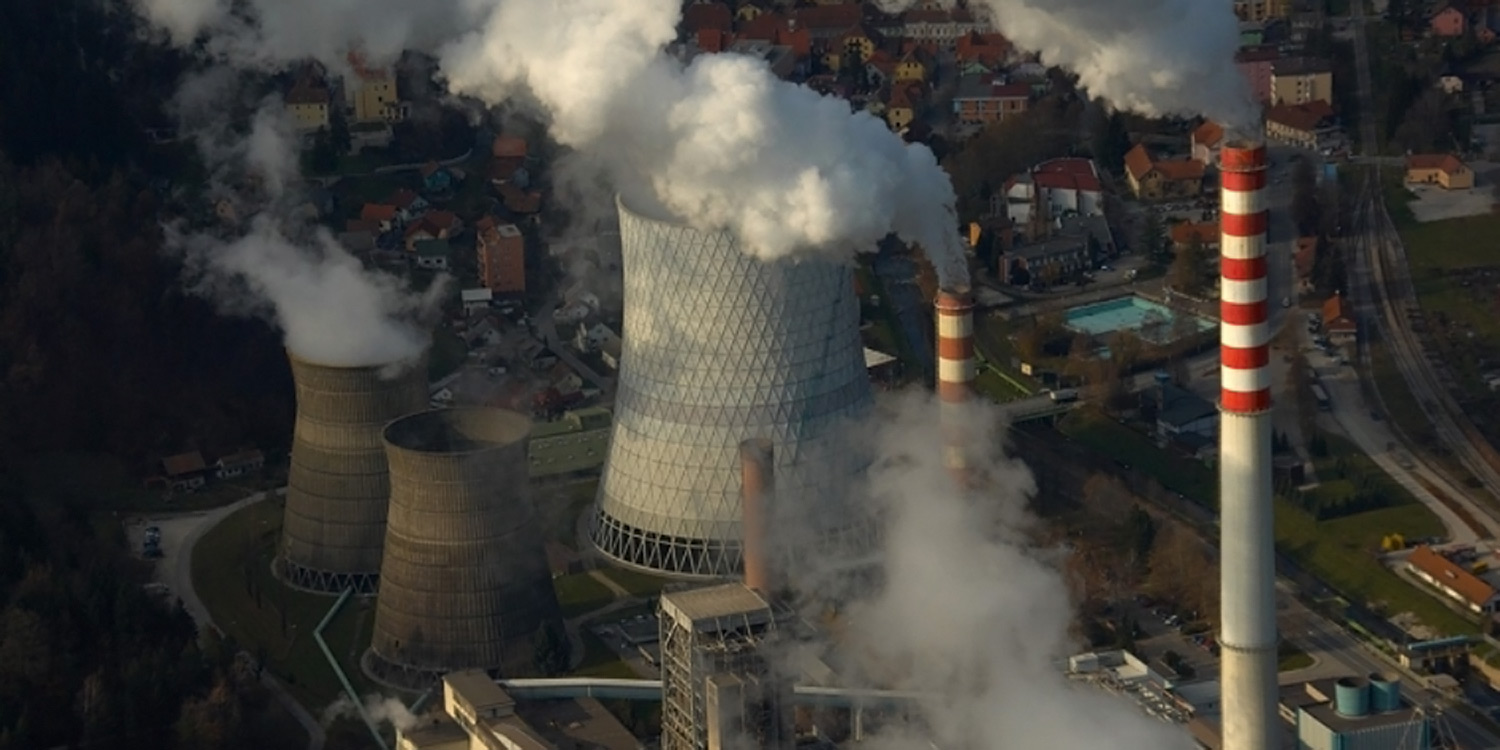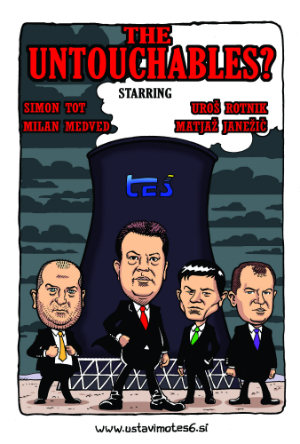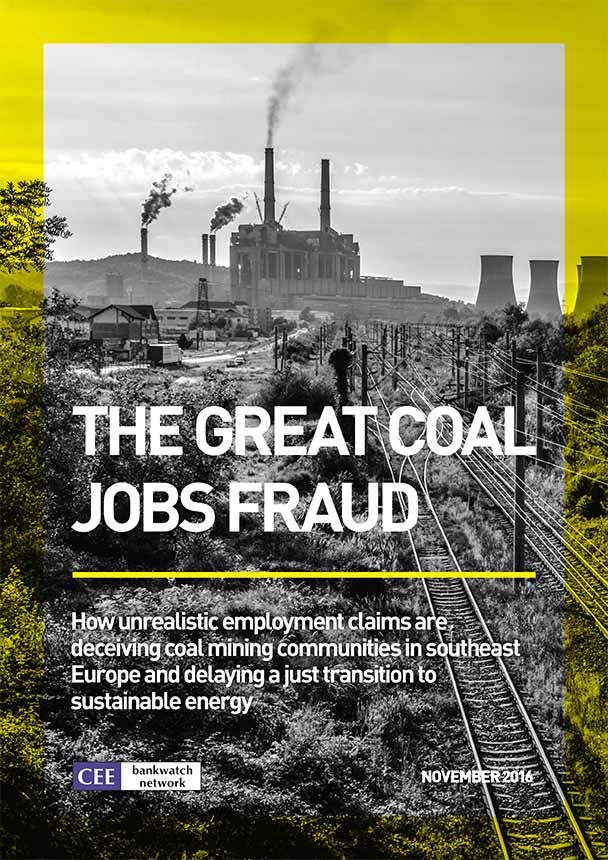Sostanj lignite thermal power plant unit 6, Slovenia
Slovenia has built a new 600 MW unit at the Šoštanj lignite power plant (TEŠ6) which has turned out to be a financial disaster, as well as locking the country into a carbon-intensive future with tens of millions of annual losses for the next four decades.

Stay informed
We closely follow international public finance and bring critical updates from the ground.
Key facts
Loans from the European Investment Bank (EUR 550 million) and the European Bank for Reconstruction and Development (EUR 100 million) added up to more than 50% of the overall costs of the investment.
In 2013, a senior EIB source described TEŠ6 as “one of those projects that tends to haunt you”.
Background
NGOs such as Focus raised numerous issues with the Slovene government and international financial institutions but they showed no sign of taking concerns into account until the project was considered a fait accompli.
TEŠ6 now looks set to make losses of EUR 70-80 million annually (pdf) for the next few years at least.
Governments in other southeast European countries planning similar projects would do well to take note.
TEŠ6 promises higher efficiency, but not low-carbon energy
Initial concerns around TEŠ6 centred around its climate impact. Its promoters argued that the new unit would increase efficiency and reduce CO2 emissions, but forgot to mention that it would lock Slovenia into high-carbon electricity generation until beyond 2050.
Operating TEŠ6 will result in emissions of 3.4 mt CO2 per year, which is equivalent to almost all of Slovenia’s emissions in 2050 (if it cuts emissions by 80 percent – a minimum according to the European goals of 80-95 percent).
Doubling of initial costs
Since 2006, when the project was announced as part of a government investment wish-list, the the costs have more than doubled (pdf) from around EUR 600 million to EUR 1.43 billion.
The reasons for this are numerous but include alleged fraud of EUR 284 million that benefitted lead equipment supplier Alstom.
Corruption charges
In a report from February 2012, the Slovenian Commission for the Prevention of Corruption issued serious warnings that:
the project [TES 6] is designed and implemented in a non-transparent manner, lacks supervision and is burdened with political and lobbying influences, and as a result there has been [and still is] a high risk of corruption and conflict of interest.
After a lengthy investigation, in October 2014 ten people were charged with fraud in relation to the project.
Read more:
The dirty French-Slovenian connection
Press release | February 23, 2012
EBRD freezes loan disbursements in Alstom’s coal project over corruption allegations. NGOs call on the EIB to follow suit
Press release | April 18, 2012

Dubious economic assumptions
An analysis (pdf) carried out by consultants CE Delft in 2011 showed that the projected price of coal was unrealistic and that the project would be very sensitive to electricity prices.
Both of these issues have already turned out to be serious problems even before the plant goes into commercial operation: The sale price of electricity is currently lower than TEŠ6’s estimated cost of production and is expected to be for the next few years at least.
One of the assumptions behind the project and conditions for the state guarantee for the first EIB loan was that the price of lignite from Velenje mine does not exceed 2.25 EUR/GJ in 2015 or 2.73 EUR/GJ in 2054, and while the current sales price is being kept secret, the production price is around 2.9 EUR/KJ (pdf) so it is not likely that the assumptions behind the project are realistic.
Unrealistic claims about employment
One of the key arguments for construction of TEŠ6 was that it would enable long-term employment in the plant and nearby Velenje mine, and that the Šaleška Valley would otherwise face a social disaster.
However in October 2014, the management of TEŠ announced its plans to optimize the functioning of TEŠ: reorganization of the company would ensure that half – 226 of the current 452 – employees are laid off.
Study: The great coal jobs fraud
How unrealistic employment claims are deceiving coal mining communities in southeast Europe and delaying a just transition to sustainable energy.

Lessons to be learnt
TEŠ6 is a good example of what can happen when a project is pushed forward to satisfy narrow interests without adequate transparency, public participation or an examination of alternatives. Had the project been opened up to scrutiny at an earlier stage, the mistaken assumptions behind the project could have been discussed and serious mistakes avoided.
It also vividly illustrates the fact that lignite can no longer be considered cheap and shows that ignoring economic warning signs early on will most likely backfire later on. This is a valuable lesson for countries in southeast Europe who are showing every sign of making similar mistakes with projects such as Pljevlja II and Tuzla 7.
Latest news
Slovene prosecutors file charges over coal plant corruption
Blog entry | 25 May, 2020The long-running saga of Slovenia’s overpriced Šoštanj 6 coal power plant took a dramatic turn last week when Slovene prosecutors filed charges including money laundering against 12 people and two companies. Meanwhile, in 2018, the Šoštanj power plant as a whole generated a net loss of EUR 58.5 million. Why are nearby Serbia and Bosnia-Herzegovina – both countries that are planning new coal plants – not learning any lessons?
Read moreDeceptive promises of new jobs in the coal sector don’t help workers, communities or the climate
Blog entry | 14 November, 2016Now is the time for southeast Europe to start an inclusive and just transition away from lignite, argues new Bankwatch research.
Read moreOverblown job promises in southeast Europe’s coal sector show the need for a just transition – report
Press release | 14 November, 2016Promises for new jobs in south-east Europe’s coal sector are exaggerated, a new Bankwatch report reveals. Hardly any coal operations across the region are economically viable, and as a result many coal workers, especially in the mines, are set to lose their jobs, even if the plans for countless new power plants materialise. Governments, coal workers and their wider communities need to work together towards a just transition.
Read moreRelated publications
OLAF decision to investigate corruption at TES 6
Official document | 19 July, 2012 | Download PDFThe European Anti-Fraud Office (OLAF) decided to start an official investigation into the case of the Sostanj lignite power plant in Slovenia due to serious concerns about corruption and conflicts of interests in the granting of the contract to the company Alstom. (Information on OLAF staff has been blackened on request by the Office.)
Corruption cases put EBRD due diligence in the spotlight
Bankwatch Mail | 14 May, 2012 |In recent months bribery and money laundering allegations levelled at a former EBRD banker, as well as revelations that an EBRD staffer, now suspended, is one of the founders of the far-right, racist organisation the English Defence League have not made for great PR for the EBRD.
EIB urged to dump coal in energy policy review
Bankwatch Mail | 14 May, 2012 |The European Investment Bank has announced that it will commence a review of its energy policy – “Clean energy for Europe: A reinforced EIB contribution” – in the second half of 2012. Bankwatch welcomed the announcement as the current policy, adopted in June 2007, needs to be brought up to speed and aligned with the latest developments in EU energy and climate policies.
